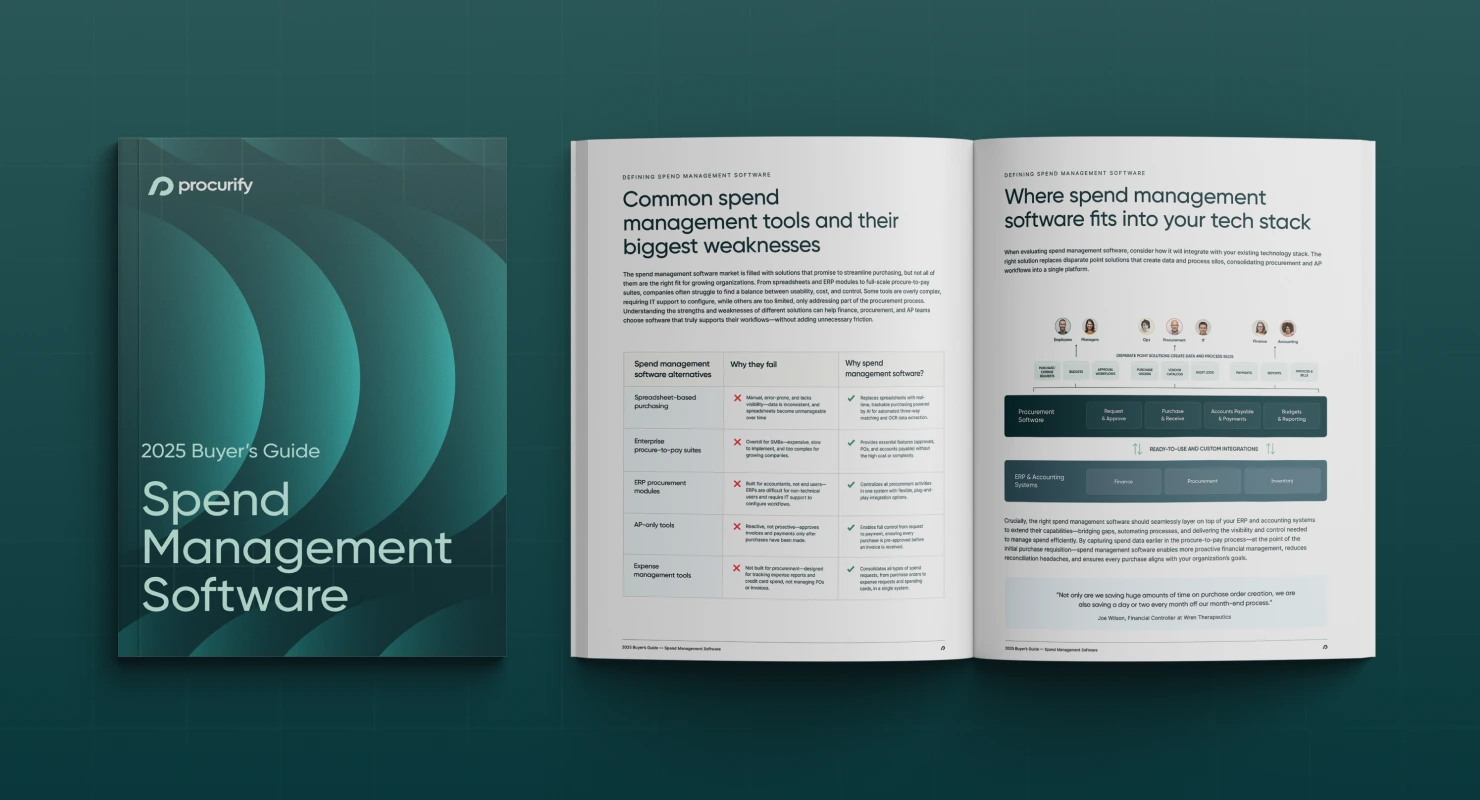4 Initiatives That Drive Procurement Process Benefits
Whether your company is a tiny startup or a global corporation, establishing a procurement strategy will, without question, yield benefits to the organization. Any purchasing professional, however biased, will tell you so at the drop of a dime.
The extent of those benefits, however, is not as quite so obvious. A good procurement process will promote more than just cost savings and efficiency – it can transform a company from top to bottom.
Okay, that’s a lofty statement, to be sure. Some evidence is necessary, isn’t it?
So, let’s take a look at what those pervasive benefits are – and, more importantly, how to achieve them – courtesy of consulting giant EY.
4 initiatives that drive procurement process benefits
1) Draft a detailed map of your company’s entire spending and update it quarterly. Spending will happen in every corner of an organization. As such, all spending needs to clearly mapped out and understood. Ask yourself these questions: What is your total spend? Who is doing the spending? What are they spending on? Who are the vendors? How often are those vendors used?
These are just a small sample of the fulsome questions that must be asked about company spend. By probing these topics, the answers, as simple as this sounds, can be captured and analyzed. And, over time, that analysis will make alterations to company spending easy – because there will be surprises.
2) Drive substantial, and sustainable savings, across the entire company.In short, the purchasing / procurement team is not the gatekeepers of savings. Savings can be found under every rock and around every corner. But how does a purchasing unit ensure those less-trained in the art of purchasing remain vigilant on spending? By creating and driving spend-centered initiatives.
Of course, designing and implementing initiatives aimed at saving money is just one piece of that puzzle. It is incumbent on the purchasing team to hold different departments accountable to those initiatives. And, by holding those departments accountable, the savings gleaned from the various programs can be captured and analyzed. From there, budgets can be set, or in the best case scenario, lowered. Detailed, accurate forecasting is a critical piece in any healthy organization and this practice will absolutely strengthen that task.
3) Inform and educate other departments about how those savings can be achieved. The second piece to implementing and enforcing savings initiatives is educating the entire corporation about how to achieve savings and how to think more critically about purchasing.
Some questions to ask: Are your company’s ‘wants’ and ‘needs’ aligned? Are you getting the best value for your money? Are you reviewing your volume requirements? Are you encouraging re-use? Can you reduce the range or complexity in your portfolio?
These questions are just a taste of what can be asked, but they do represent the building blocks for educating each department about the importance of spending. It’s one thing to design savings programs, it is another to teach others about how to attack, evaluate and ultimately achieve those savings.
4) Ensure contract management and supplier relationship management programs are enforced. When it comes to evaluating suppliers (or the contracts attached to those suppliers), too often the focus is solely on ‘time.’ How quickly can goods be delivered? What is the penalty if those terms aren’t met?
Such terms, of course, are important. But, the value of suppliers and contracts is much richer than just that singular focus. For example, a trend in supplier management (for the past handful of years) is supplier risk assessment. What kind of business practices do your suppliers engage in? Anything that could be seen as troublesome? That type of information is, in the current business climate, invaluable. If a supplier is found to be engaging in less-than-acceptable business practices – environmental damage or child labor, to name but two examples – can reflect negatively on the purchasing organization. And that situation, needless to say, contains real value.
Over time, there will be more initiatives designed to help an organization derive benefits from its procurement process (surely procurement professionals have already added / evolved the aforementioned list). That’s a good thing – the ever-evolving state of procurement ensures the discipline will continue to be relevant. And that relevancy, it must be said, will continue to develop and promote widespread growth of an organization’s procurement process benefits.

2025 Spend Management Software Buyer’s Guide
Choose the spend management solution best suited to your organization’s needs with an overview of the 2025 software ecosystem, feature comparisons, and a free vendor capability evaluation checklist.
